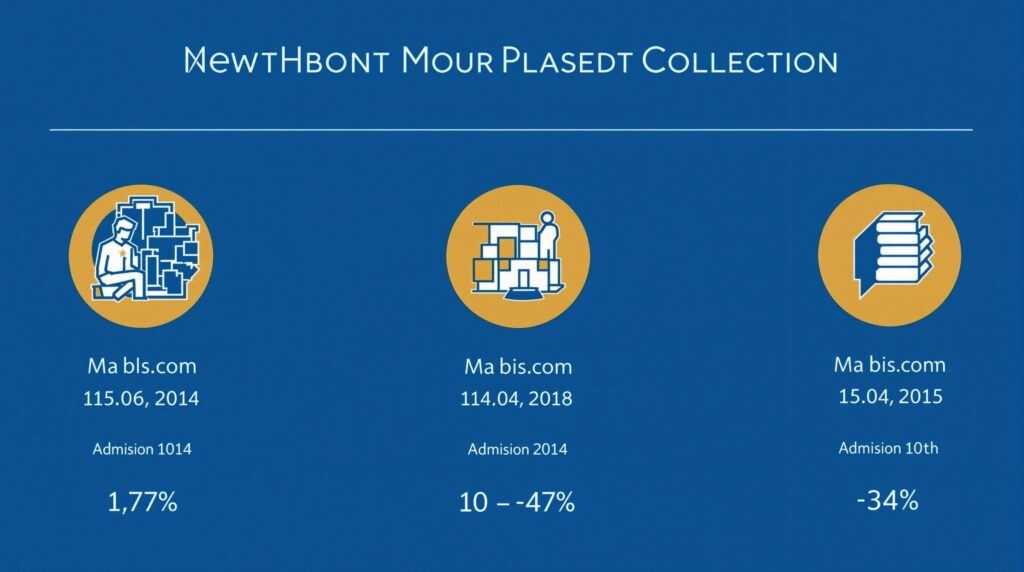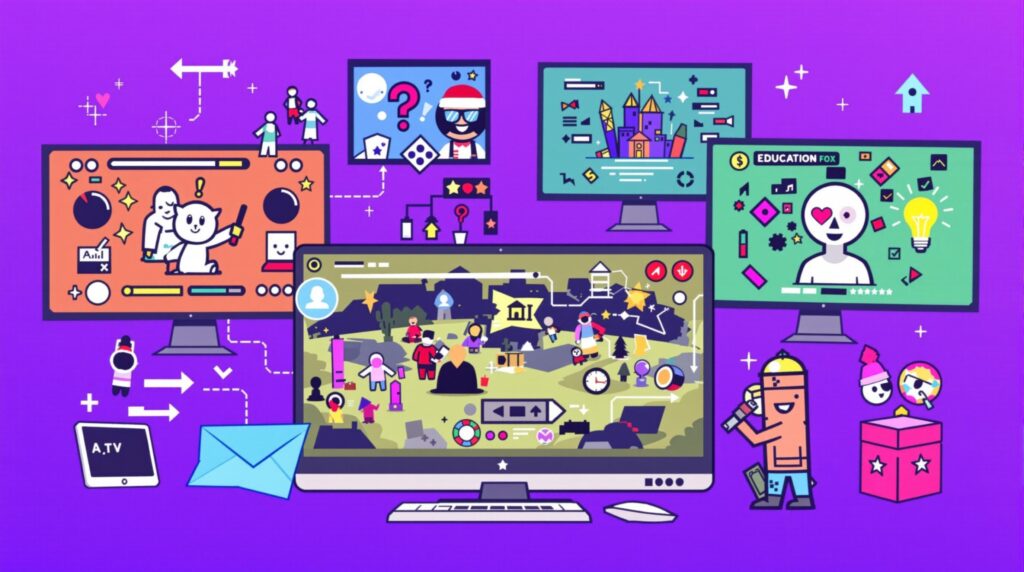Education funding through grants can transform academic pursuits and professional trajectories when you know how to find the right opportunities. Strategic use of grant databases can connect you with billions in financial support that would otherwise remain inaccessible, whether you’re seeking scholarships, research funding, or program development resources.
Key Takeaways
- Grant databases reduce research time by up to 70% while centralizing thousands of funding opportunities from various sources
- Specialized platforms like Grants.gov and Instrumentl offer tailored grant matching with success rates three times higher than independent applications
- Data-driven application strategies can increase approval rates to 88% when properly aligned with funder priorities
- Over $4.5 billion annually in private foundation funding for education is trackable through comprehensive databases
- Nearly 40% of eligible students miss out on Pell Grants due to incomplete applications or missed deadlines
Understanding the Power of Grant Databases in Education
Grant databases serve as centralized information hubs that aggregate funding opportunities from federal agencies, state programs, private foundations, and corporate initiatives. These digital treasure troves let you filter through thousands of potential funding sources in minutes rather than months. For educators and students, this efficiency is game-changing—research shows these platforms can cut search time by up to 70% while significantly improving application success rates.
The funding landscape is immense but often hidden to those without proper tools. For example, Grants.gov houses over 1,000 federal grant programs, including crucial educational funding like Pell Grants (offering maximum awards of $7,395 in 2025) and specialized opportunities like Rural Education Achievement Program (REAP) grants. Meanwhile, private foundations contribute an additional $4.5 billion annually to education initiatives, tracked through specialized educational grant databases.
Despite this wealth of opportunity, accessibility remains a challenge—the U.S. Department of Education allocated $111 billion in federal student aid in 2022, yet 39% of eligible students missed out on Pell Grants simply due to incomplete or missed applications. This gap demonstrates why mastering grant database usage isn’t just helpful—it’s essential for financial success in education.

Comparing Top Grant Databases: Features and Benefits
Not all grant databases are created equal, and choosing the right platform can dramatically impact your funding success. Here’s a breakdown of the leading options based on features, cost, and proven results:
Grants.gov stands as the definitive federal funding database, offering completely free access to over 1,000 government grant programs. In 2023 alone, it processed $1.2 trillion in funding requests. For education seekers, it’s particularly valuable for accessing Pell Grants, which provided an average award of $4,511 in 2022. The platform’s main strength is its comprehensive coverage of federal opportunities, though its interface can be less intuitive than paid alternatives.
For those seeking private foundation funding, Candid’s Foundation Directory Online ($219/month) provides unmatched access to 242,000+ foundations that collectively award $4.5 billion annually to education initiatives. Its specialized filters for STEM projects and minority scholarships make it particularly valuable for targeted searches. Users report the database’s historical funding data helps them craft more competitive applications by understanding funders’ preferences.
The AI-powered Instrumentl platform ($179+/month) has revolutionized the grant-seeking process with its machine learning algorithms that match users to highly relevant opportunities. Its users achieve a 30% success rate—triple the national average—and save approximately 15 hours monthly on research. The platform’s grant proposal templates and tracking tools provide end-to-end support throughout the application process.
For comprehensive coverage with detailed guidance, GrantStation ($699/year) offers access to 40,000+ opportunities with particularly strong features for first-time applicants. Its geographic filters and detailed eligibility guidelines help users quickly identify relevant opportunities without wasting time on grants they don’t qualify for.
Crafting Winning Applications: Strategic Approaches
Access to grant databases is just the first step—the real value comes from using them to create compelling, targeted applications. Research shows that 90% of funded applications directly address grantor priorities, highlighting the importance of alignment with funding objectives. For example, REAP grants specifically require applicants to have rural school locale codes 41-43, a detail easily missed without proper research.
Data-driven approaches yield measurable results. Shasta College achieved an impressive 88% success rate by systematically tailoring their applications to funders’ historical preferences identified through database research. Their methodology involved studying past award recipients, identifying common themes, and structuring proposals to highlight similar elements in their own projects.
Deadline management represents another critical success factor. Approximately 45% of potential applicants miss opportunities due to late submissions. Modern grant databases combat this problem with automated reminder systems and application timelines. Additionally, only 61% of eligible students completed FAFSA applications for Pell Grants in 2023, showing how even “free money” goes unclaimed when application processes aren’t properly tracked.
Many databases now offer specialized tools to improve application quality. GrantStation’s budget templates help align funding requests with average award amounts (such as the $9,130 per student average at public universities in 2025), improving the likelihood of approval by demonstrating realistic financial planning.
Success Stories: Real-World Database-Driven Funding
The abstract benefits of grant databases become concrete when examining actual success stories. The prestigious Fulbright Program, which provides grants averaging $25,000 for research abroad, requires precise academic field alignment in applications. Successful applicants report using specialized databases to identify exact discipline matches rather than applying with general categories, significantly improving their acceptance odds.
Rural schools have found particular success with database-guided applications. In 2023, dual-eligible institutions secured $163 million through the Rural Education Achievement Program by using the U.S. Department of Education’s REAP eligibility filters to confirm their qualification before investing time in applications. This targeted approach ensured they didn’t waste resources on opportunities they wouldn’t qualify for.
One community college case study demonstrates the transformative potential of strategic database usage. Using Candid’s Foundation Directory Online, the institution secured $38 million in workforce development grants by identifying foundations with historical interest in vocational training programs. This funding transformed their technical education offerings and created direct pathways to employment for students.
For those seeking international opportunities, specialized databases provide unique advantages. Platforms like Devex ($83–$149/month) connect educators to global funding sources like UNESCO’s $500,000 literacy grants, opportunities that might be entirely missed when relying solely on federal financial assistance programs.
Common Pitfalls and How to Overcome Them
Even with powerful grant databases at your disposal, common mistakes can derail funding efforts. A startling 60% of applicants fail to thoroughly verify their eligibility for programs they apply to. For example, REAP grants have a strict 600-student enrollment cap for rural schools—a detail easily confirmed through proper database research but often overlooked by eager applicants.
Generic, one-size-fits-all proposals significantly underperform compared to customized applications. Research indicates tailored proposals have a 50% higher success rate, highlighting the importance of using database intelligence to craft grant-specific applications. Platforms like Instrumentl now provide project-specific templates to guide this customization process.
Post-award compliance represents another critical challenge. Approximately 33% of grants are eventually revoked due to reporting errors or unmet requirements. Grant databases increasingly offer compliance tracking features to prevent these costly mistakes. For example, GrantWatch’s $18/week tier provides detailed compliance checklists to help recipients avoid common pitfalls like supplanting (using grant funds to replace existing budget allocations).
The impact of database-guided approaches is clear in the numbers: the national success rate for independent grant applications hovers around 10%, while those using comprehensive database resources achieve roughly 30% approval rates. This threefold improvement demonstrates the tangible value of strategic database utilization.
Maximizing Database Efficiency: Tips and Techniques
To extract maximum value from grant databases, consider implementing these proven optimization strategies. First, leverage project-specific templates available through platforms like Instrumentl to create customized application packages for each opportunity. These templates incorporate historical data on successful proposals to guide your presentation of key information.
Set up automated alert systems through services like GrantForward to receive immediate notifications when relevant opportunities are posted. This proactive approach ensures you’ll never miss application windows for well-matched grants. Many educators report this simple step has doubled the number of grant opportunities they’re able to pursue annually.
When selecting databases, compare options based on specific criteria relevant to your situation. Consider factors like cost, geographic coverage, specialization, and user interface complexity. Some users find a combination approach most effective—using Grants.gov for federal opportunities while supplementing with Candid for private foundation research.
Look beyond the obvious funding sources. The Walton Family Foundation offers $1.6 million in environmental education grants that many applicants miss when focused exclusively on traditional education funding streams. Comprehensive databases help identify these cross-sector opportunities that match your educational objectives.
Finally, utilize specialized compliance tools like those offered by NAVSO to track reporting requirements and deadlines. These systems help prevent the administrative oversights that frequently lead to funding revocation, ensuring you maintain good standing with grantors for future opportunities.
Future Trends: How Technology is Transforming Grant Access
The grant database landscape continues to evolve, with several technological trends poised to reshape funding access. AI integration leads these innovations, with platforms like Pivot using machine learning algorithms to predict emerging funding opportunities—potentially unlocking access to $220 billion in new grants by 2026. These systems analyze historical funding patterns to identify likely future priorities before they’re officially announced.
Mobile-first database design represents another significant shift. Approximately 70% of Grant Gopher users now apply via smartphones, reflecting broader changes in how we access and interact with information. This mobile accessibility has shown particular benefits for rural educators and those with limited computer access.
Blockchain technology is beginning to transform grant transparency. The National Endowment for the Humanities is piloting ledger systems to track $50 million in grants in real time, creating immutable records of funding distribution and usage. This increased transparency benefits both grantors and recipients by streamlining reporting and verification processes.
Looking further ahead, AI automation is projected to handle approximately 40% of grant writing tasks by 2030. Early experiments with these systems show they can draft standard sections of proposals based on successful past applications, allowing human grant writers to focus on customization and innovation.
Climate education funding represents a rapidly growing priority area, with databases like Funds for NGOs now listing $800 million in sustainability grants. This trend reflects broader shifts in funding priorities toward addressing global challenges through education.
Building a Long-Term Funding Strategy with Database Intelligence
Sustainable educational funding requires moving beyond one-off applications to



